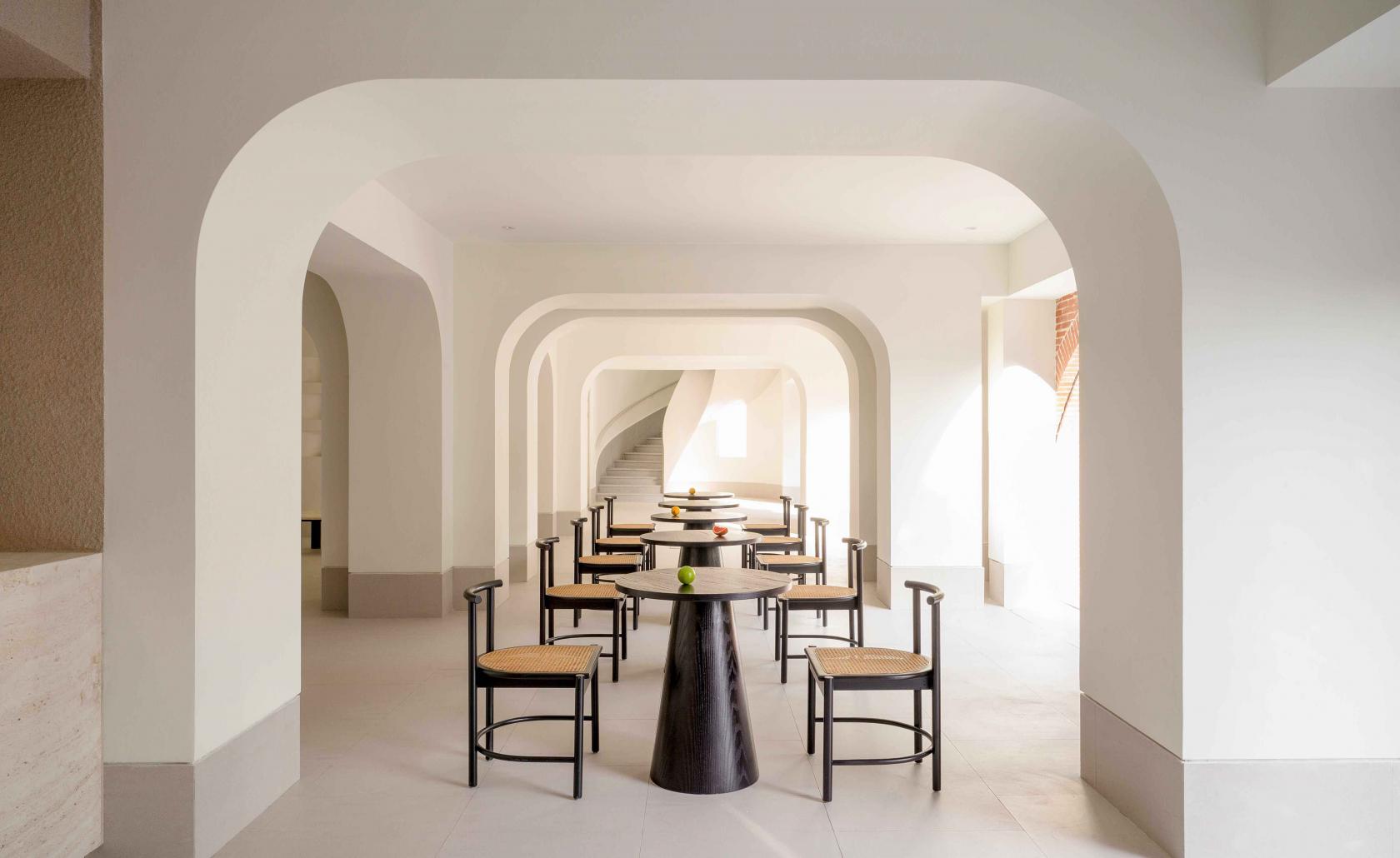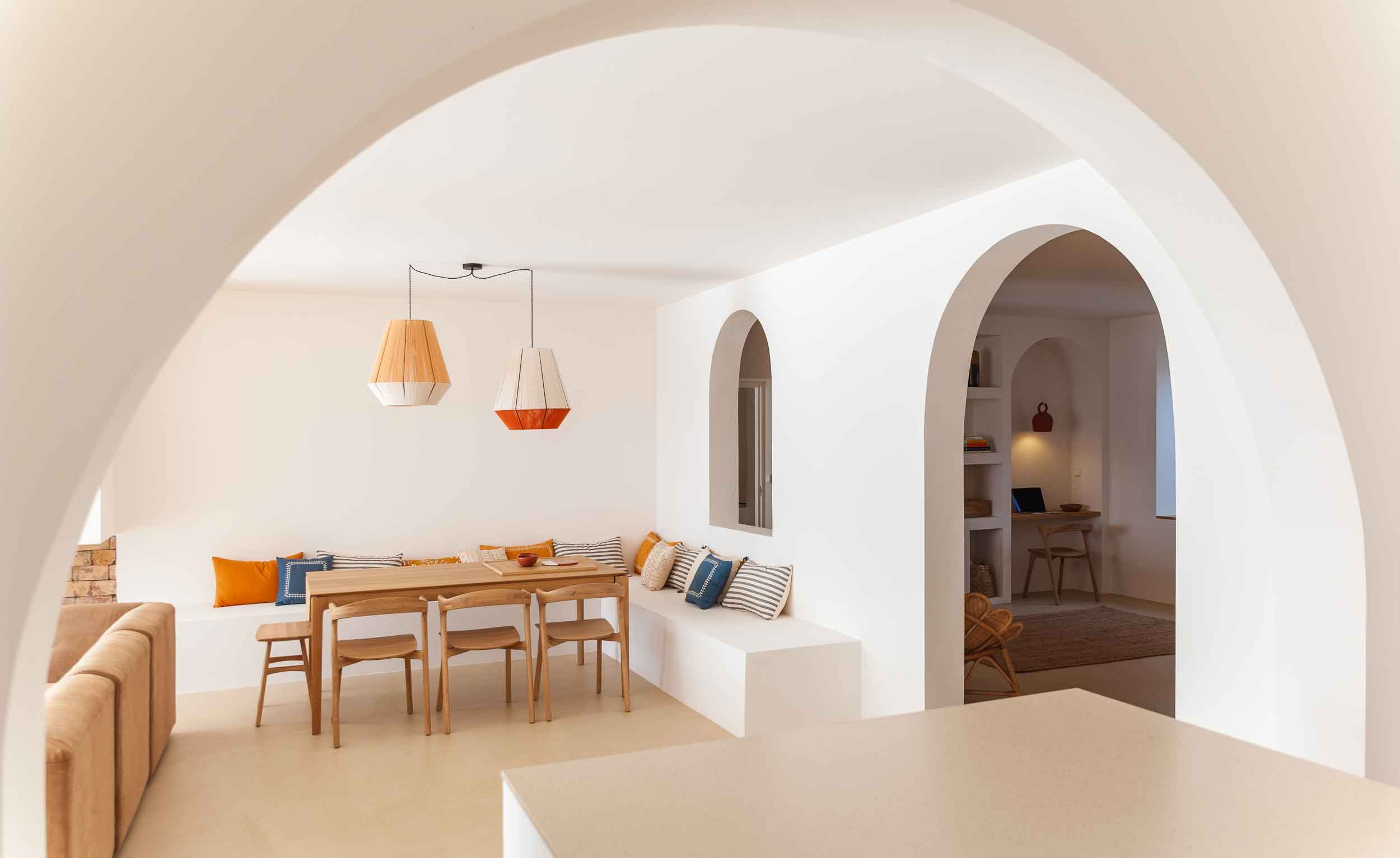Veuve Clicquot and Wallpaper* at Hotel du Marc

The ground floor of the beautiful 175-year-old building was covered with perfectly rendered customisations of classic US mailboxes in an array of designs and colours. And the event was the culmination of a journey that began on 1 October 2014 when Veuve Clicquot and Wallpaper* announced its collaborative Re-Creation Awards with a rousing missive from Veuve’s founder Madame Barbe-Nicole Clicquot. 'Invent the things of tomorrow,’ said Madame Clicquot in one of her famous letters mailed from her Reims home during the 19th century. ‘Go before others, be determined and exacting... let your intelligence direct your life. Act with audacity.’ With these words as inspiration, competition entrants were also urged to act with audacity by submitting graphic designs and colours for a limited-edition version of Veuve Clicquot’s American mailbox-style gift packaging. Inspired by Madame Clicquot’s history of correspondence with her clientele, these allow one to send a 75cl bottle of champagne through the post.
‘The Re-Creation Awards captured the very essence of Veuve Clicquot's creative spirit,’ says Gallot. ‘Taking something traditional, classic and iconic, and reimagining it, reinterpreting it so that it becomes something new, modern and extraordinary. We have been thrilled by the way the competition has captured the imagination of young creative minds all over the world. We had 371 outstanding entries to present to our jury and more than 350,000 people voted online. The project has been truly inspirational.’
The inaugural competition invited members of the public and up-and-coming designers from nine host countries to reimagine the mailbox. At the end of last year, two national winners were determined from each host country, one by online public vote, the other by local jury. The shortlist of 18 winning designers then gathered at Veuve Clicquot’s Hôtel du Marc, in the Champagne region of France, for a prestigious two-day experience, ending with a gala ceremony where the international winner of the competition was revealed to be Toronto-based graphic designer Eileen Ugarkovic, who picked up €10,000 in prize money and the chance to present her winning Clicquot Mailbox at Salone del Mobile in Milan. ‘In creating my concept, I was inspired by Clicquot’s anchor, the symbol of hope,’ says Ugarkovic. ‘When one thinks of hope, birds immediately come to mind – birds also represent freedom and ideas. Since freedom and ideas are conceived on paper, I envisioned paper birds, or paper planes, flying into Madame Clicquot’s mailbox. Blue was chosen in addition to the brand colour to symbolise Clicquot's historical contribution to the city of Reims. When combined, these colours are regal and royal, just like the Clicquot brand itself.’
Ugarkovic grew up in the Canadian steel town of Hamilton, an hour away from cosmopolitan Toronto, in an industrious family with Croatian heritage. ‘Mum sewed, Dad built furniture…built our house, in fact.’ She studied broadcast journalism at college but later dropped out to go travelling around Europe, where she found her calling. Inspired by the architecture of Bruges, Berlin and Barcelona, and the grand aesthetic of Paris and London, Ugarkovic returned to Canada ready to start again. She graduated in design from George Brown College, Toronto, in 2004 and is now a senior designer at TMX Equicom, where she specialises in corporate identity, branding and logos. ‘Winning this award has been so emotional for me, a genuine inspiration,’ Ugarkovic told Wallpaper* as she clutched her silver Pablo Reinoso-designed award. ‘I never thought I would end up doing a job that I love. I had to wait a long time to find my way, and winning this competition feels like the reward for all my patience and the start of something wonderful.’
So why did the jury choose Ugarkovic’s paper planes? It was, as they say at Hôtel du Marc, ‘So Clicquot’. ‘All the competition entries were beautiful,’ says Reinoso. ‘But this was the most beautiful of all because it also fulfilled the brief, echoed the heritage of the Clicquot marque, and the creative, communicative spirit of its founder.’ ‘And everyone loves a paper plane,’ adds Wallpaper* creative director Sarah Douglas.

Hôtel du Marc was the venue for the Re-Creation Awards grand finale

The mansion’s distinctive dining room

Some of the Re-Creation Awards’ finalists

Winner Eileen Ugarkovic, who was inspired by Veuve Clicquot’s anchor, ‘the symbol of hope’, she says

Wallpaper* magazine’s creative director Sarah Douglas and Veuve CEO Jean-Marc Gallot

Guest In front of the Campana Brothers' Veuve Clicquot tasting room

Eileen Ugarkovic with her winning mailbox design

Re-Creation Awards judge, sculptor and designer Pablo Reinoso at Hôtel du Marc with one of his works
Wallpaper* Newsletter
Receive our daily digest of inspiration, escapism and design stories from around the world direct to your inbox.
Melina Keays is the entertaining director of Wallpaper*. She has been part of the brand since the magazine’s launch in 1996, and is responsible for entertaining content across the print and digital platforms, and for Wallpaper’s creative agency Bespoke. A native Londoner, Melina takes inspiration from the whole spectrum of art and design – including film, literature, and fashion. Her work for the brand involves curating content, writing, and creative direction – conceiving luxury interior landscapes with a focus on food, drinks, and entertaining in all its forms
-
 All-In is the Paris-based label making full-force fashion for main character dressing
All-In is the Paris-based label making full-force fashion for main character dressingPart of our monthly Uprising series, Wallpaper* meets Benjamin Barron and Bror August Vestbø of All-In, the LVMH Prize-nominated label which bases its collections on a riotous cast of characters – real and imagined
By Orla Brennan
-
 Maserati joins forces with Giorgetti for a turbo-charged relationship
Maserati joins forces with Giorgetti for a turbo-charged relationshipAnnouncing their marriage during Milan Design Week, the brands unveiled a collection, a car and a long term commitment
By Hugo Macdonald
-
 Through an innovative new training program, Poltrona Frau aims to safeguard Italian craft
Through an innovative new training program, Poltrona Frau aims to safeguard Italian craftThe heritage furniture manufacturer is training a new generation of leather artisans
By Cristina Kiran Piotti
-
 Villa One at the One & Only Palmilla — Los Cabos, Mexico
Villa One at the One & Only Palmilla — Los Cabos, MexicoBy Chadner Navarro
-
 Martim — Wroclaw, Poland
Martim — Wroclaw, PolandBy Daven Wu
-
 Tattersalls Hotel — Armidale, Australia
Tattersalls Hotel — Armidale, AustraliaBy Dimity Noble
-
 KLoé Hotel — Kuala Lumpur, Malaysia
KLoé Hotel — Kuala Lumpur, MalaysiaBy Jennifer Choo
-
 Casa Hoyos — San Miguel de Allende, Mexico
Casa Hoyos — San Miguel de Allende, MexicoBy Daven Wu
-
 Littlenap — Hangzhou, China
Littlenap — Hangzhou, ChinaBy Daven Wu
-
 Casa Santa Teresa — Corsica, France
Casa Santa Teresa — Corsica, FranceBy Daven Wu
-
 Swedish studio Claesson Koivisto Rune designs K5, a new hotel in Tokyo
Swedish studio Claesson Koivisto Rune designs K5, a new hotel in TokyoStep inside Claesson Koivisto Rune’s design as a 1920s bank turns hotel
By Danielle Demetriou